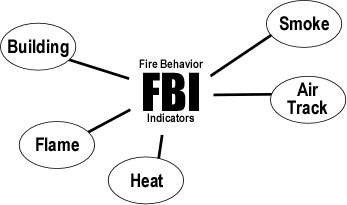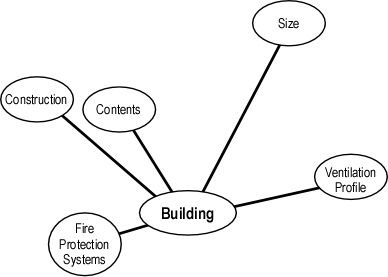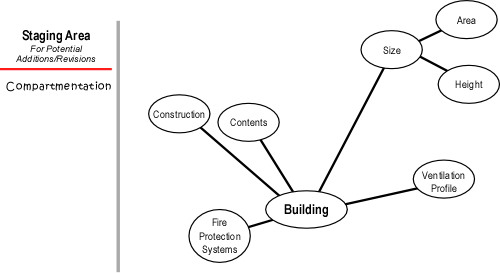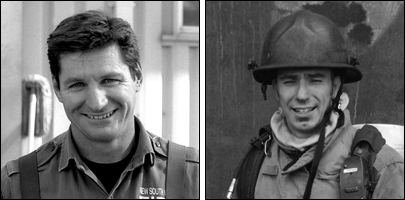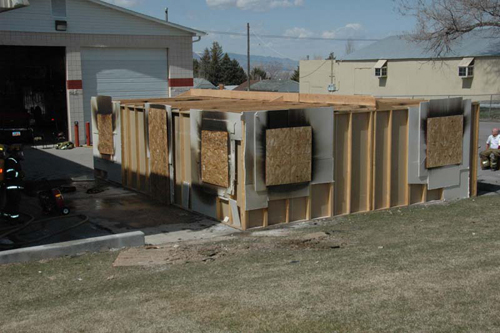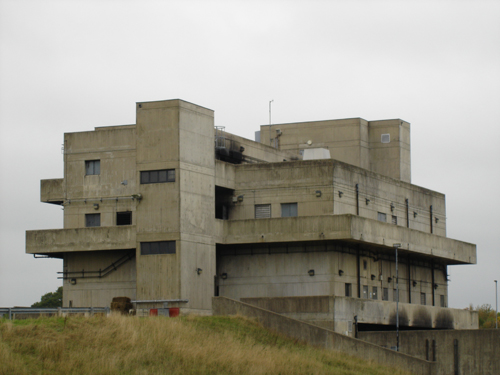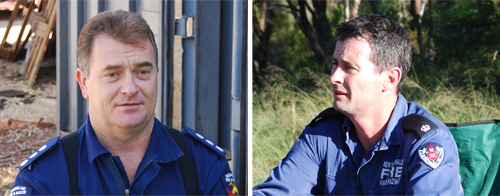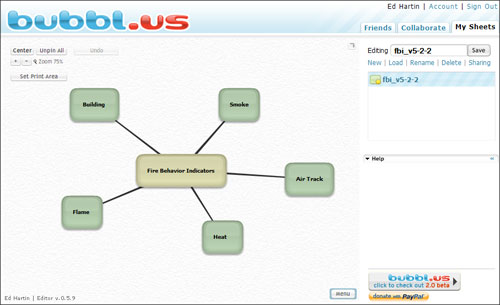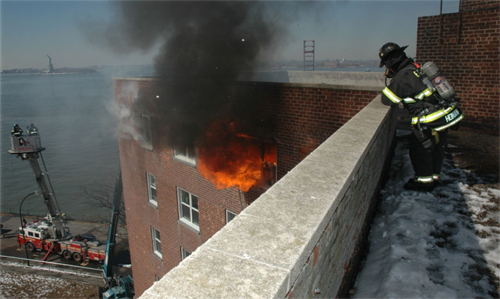Florida Live Fire Training Instructor (LFTI)
Monday, June 29th, 2009Last week I had the opportunity to attend the Florida State Fire College’s Live Fire Training Instructor (LFTI) Course held at the Oregon Public Safety Academy. This delivery is part of an effort by the state’s Department of Public Safety Standards and Training (DPSST) to evaluate options for improving safety during live fire training. DPSST and the Oregon Fire Instructor’s Association are evaluating curriculum and varied approaches to delivering training to assist fire service agencies safely and effectively deliver live fire training.
The Florida Experience
Deputy Chief Dave Casey, Seminole Tribe of Florida Fire Department (former Chief of Fire Standards and Training, Florida State Fire Marshal) presented an overview of the origin and evolution of live fire instructor training in Florida.
On July 30, 2002 Lieutenant John Mickel and Firefighter Dallas Begg lost their lives in a live fire training exercise conducted in Poinciana, Florida (see Figure 1). LT Mickel and FF Begg were performing primary search ahead of the attack line during a live fire evolution in an acquired structure. Horizontal ventilation resulted in ventilation induced flashover while the search team was in the fire compartment. This training exercise was conducted in compliance with many of the provisions of NFPA 1403. However, instructors did not adequately assess the fire compartment in terms of potential fire behavior and the required fuel load to meet the desired learning outcomes for the evolution. For more information on this incident see the Florida State Fire Marshals Report and NIOSH Death in the Line of Duty Report F2002-34.
Figure 1. Acquired Structure-Poinciana, Florida
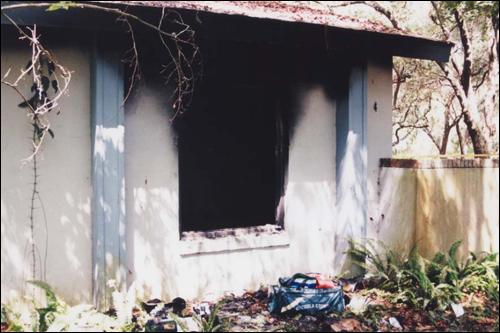
Note: Florida State Fire Marshal Photo
This incident resulted in considerable discussion of how to ensure that instructors delivering live fire training understood the provisions of NFPA 1403 and how to safely and effectively deliver live fire training. The Florida Live Fire Training Taskforce held its first meeting in June of 2004 and established the following mission:
This curriculum is intended to deliver a comprehensive live fire instructor training program, within a safe and controlled environment, in accordance with NFPA 1402, NFPA 1403 and NFPA 1500.
In May 2005, the Florida Legislature passed the LT. John Mickel & Dallas Begg Act, requiring certification to conduct live fire training in the state of Florida and was signed into law by the Governor in June of the same year. The first pilot delivery of the Live Fire Training Instructor course was held in January 2006.
LFTI
Participants in this course must be certified instructors and must complete pre-course readings and a pre-test prior to attending the training program. The 40-hour course addresses the provisions of NFPA 1403 on a chapter by chapter basis:
- Administration, Referenced Publications, & Definitions
- Acquired Structures
- Gas-Fired Live Fire Training Structures
- Non-Gas-Fired Live Fire Training Structures
- Exterior Props
- Exterior Class B Fires
- Records & Reports
This 40-hour course provides instructors with a detailed look at the standard and the opportunity to apply the standard in a variety of activities including development of live fire training plans, evaluation of acquired structures, and management of live fire training delivery.
Evaluation and Critique
The instructional staff delivering this program was extremely knowledgeable and provided the participants with a solid grounding in both the provisions of the standard and the rationale for the design of the course. In addition, considerable effort was extended to ensure that the participants understood the physiological impact of live fire training on the participants and importance of maintaining hydration and managing heat stress. This is critical as the majority of firefighters who die during live fire training suffer from heat stress, heart attack, or some other underlying medical cause.
While the LFTI course provided excellent information and is an essential element in training instructors to deliver live fire training, it does not go far enough. The LFTI course does not (yet) address the most critical issue which is the participants understanding (or lack thereof) of fire dynamics.
Emphasizing the value of NFPA 1403 in a videotaped interview (American Heat, September 2003) Dave Demers (who investigated the Boulder, Colorado firefighter live fire training fatalities that gave rise to the development of this standard) stated that with the standard “you don’t need to think, you simply need to follow directions”. While this perspective was not shared by the instructional staff delivering the LFTI course, it does point to a major disconnect between the standard, course content, and predominant cause of traumatic fatalities during live fire training.
Recommendations
The short term solution to ensuring live fire instructors have an understanding of and can apply NFPA 1403 and practical fire dynamics is to expand course content to include compartment fire behavior and related content that is applicable to other types of live fire training (e.g., exterior props and Class B fires). However, this knowledge is required by more than instructors. The long term solution is to expand the level of knowledge required by firefighters and fire officers across the board. This will likely require revision of the applicable professional qualifications standards and related curriculum (no small task from a political perspective).
Thanks!
I would like to extend my thanks to Florida State Fire Academy instructional staff Susan Schell, Joe Garda, Dave Casey, Dan Godfrey, and Richie Leitz for their delivery of the LFTI and ongoing efforts in support of firefighter safety.
Update
Tuesday is another milestone in my career. Effective June 30, 2009, I will no longer be employed by Gresham Fire & Emergency Services. Due to severe fiscal constraints, the entire Training, Safety, & EMS Division is being eliminated. Lieutenant Chris Baird previously went to the line as a company officer and EMS Coordinator John Stouffer and I are being laid off. Fortunately I had six months notice and have been working towards transition to a new role in a different organization (yet to be determined).
While many would approach being laid off a bit differently, I chose to have the department’s traditional coffee and cake send off (Figure 2).
Figure 2. Chief Lewis Presents Ed’s Badges

Note: Photo by Lieutenant Chris Baird
This is not a dead end, but simply a fork in the road. Stay tuned for news of the next chapter in the adventure!
References
American Heat (2003, September). Live Fire Training Fatalities.
Florida State Fire Marshal, Bureau of Fire Standards and Training. (2002). Incident Investigation of Two Firefighters Deaths During a Training Fire; Poinciana, Florida; July 30, 2002. Retrieved June 28, 2009 from http://www.fldfs.com/sfm/pdf/InvestFFDeath_FST_20020730_20030411.pdf.
National Fire Protection Association (NFPA). (2007) NFPA 1403 Standard on Live Fire Training Evolutions. Quincy, MA: Author.
National Institute for Occupational Safety and Health (NIOSH). (2003) Death in the line of duty report F2002-34. Retrieved June 28, 2009 from http://www.cdc.gov/niosh/fire/pdfs/face200234.pdf.




